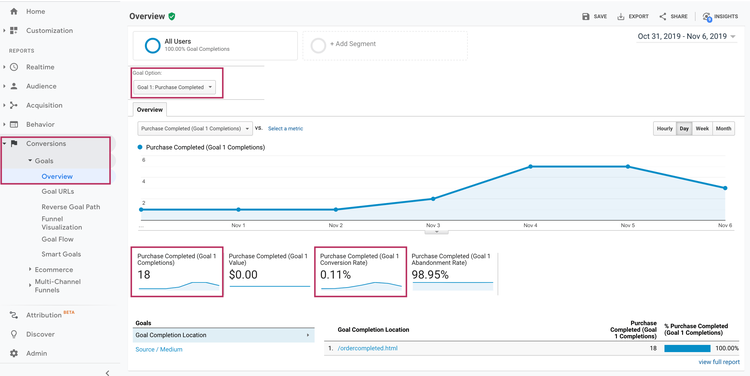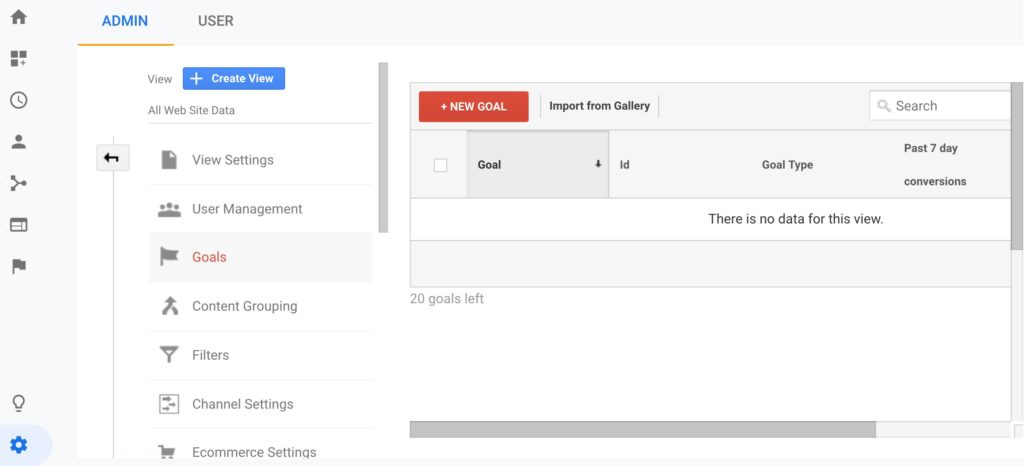What Data Is Google Analytics Goals Unable to Track: Critical Info
What Data Is Google Analytics Goals Unable to Track: Critical Info
Blog Article
Discover the Limitations of Google Analytics Goals: Introducing the Information Types That Remain Untrackable
As companies increasingly rely upon data-driven decision-making, recognizing the limitations of devices like Google Analytics ends up being extremely important. While Google Analytics Goals offer important understandings right into user communications, there exist data kinds that thwart tracking, posing difficulties to a comprehensive understanding of individual habits. These untrackable data types question about the precision and completeness of the analytics information that organizations heavily trust for their electronic methods. Curious to uncover the hidden unseen areas in your information analysis process?
Insufficient Individual Trip Tracking
Insufficient customer trip monitoring within Google Analytics can impede the capacity to precisely assess user habits. When the individual journey is not totally tracked, there are voids in the data that stop a detailed understanding of exactly how customers connect with a web site. This lack of understanding can lead to missed chances for optimization and improvements to the customer experience.
One common problem with insufficient user trip tracking is the inability to see the complete path that users take before finishing an objective or leaving the site. Without this info, it is challenging to identify where customers may be coming across challenges or friction factors that avoid them from transforming. Furthermore, incomplete tracking can cover the effect of specific marketing initiatives or site changes on user habits.
To address this constraint, it is important to set up proper monitoring systems within Google Analytics to catch the whole individual journey. This may involve establishing up event monitoring, goal funnels, or making use of tools like Google Tag Supervisor to make certain that no crucial interactions go unrecorded. By obtaining a detailed view of the individual journey, web site owners can make even more enlightened decisions to boost user involvement and drive conversions.
Acknowledgment Obstacles
Navigating through acknowledgment obstacles in Google Analytics requires a complete understanding of just how various touchpoints contribute to the overall conversion process. Attribution difficulties develop from the intricacy of modern-day consumer trips, where individuals engage with several networks prior to transforming.
One common acknowledgment obstacle is the problem in associating conversions to the correct source, especially in instances where customers connect with multiple networks prior to transforming. This can result in mistakes in identifying which advertising efforts are driving one of the most conversions. In addition, cross-device monitoring presents one more attribution challenge, as users typically change between gadgets throughout their journey, making it challenging to track their interactions flawlessly. Marketers need to carefully analyze and translate acknowledgment data to make informed choices and optimize their marketing approaches successfully.
Offline Conversions
Given the challenges connected with attributing conversions accurately in online networks, the dimension of offline conversions presents a considerable possibility for online marketers seeking an extra detailed understanding of their customers' trip. Offline conversions refer to activities that consumers absorb the physical globe, such as making purchases in brick-and-mortar stores or over the phone, attending occasions, or engaging with published products - what data is google analytics goals unable to track. These conversions are important for services that operate both online and offline, as they offer important insights right into the performance of advertising projects across different touchpoints
Tracking offline conversions traditionally postured a substantial obstacle for marketing professionals, as it was challenging to connect these actions back to details online communications precisely. With improvements in technology, such as the combination of CRM systems, unique identifiers, and promo code codes, companies can you could try this out now connect the void in between online and offline data to get a more all natural view of consumer habits. By successfully gauging offline conversions, marketing experts can maximize their methods, allot resources more successfully, and ultimately boost the total client experience.
Cross-Device Monitoring
Cross-device tracking plays an important function in comprehending the interconnected nature of consumers' electronic communications across multiple devices. In today's omnichannel world, where customers flawlessly switch over between desktop computers, mobile phones, and tablet computers, tracking their behavior across these devices is necessary for marketing experts to acquire a thorough view of their client trip.

Additionally, privacy issues and regulations such as GDPR and CCPA have even more difficult cross-device monitoring. With individuals requiring even more control over their data and raised constraints on monitoring technologies, marketing professionals should discover privacy-compliant and cutting-edge means to link individual interactions across gadgets.
Dynamic Material Interaction
Comprehending individual engagement with vibrant material is crucial in optimizing electronic marketing techniques for improved audience interaction. Dynamic web content describes website aspects that change based upon customer actions, choices, or other factors, offering a personalized experience. Tracking individual interactions with vibrant material positions challenges for typical analytics devices like Google Analytics.
While Google Analytics can track standard communications like clicks and web page sights, it might battle to catch more nuanced interactions within vibrant content. what data is google analytics goals unable to track. Metrics such as time invested in certain dynamic components, hover actions, or interactions within pop-ups are usually not easily measurable utilizing conventional tracking techniques. This limitation prevents marketing professionals' ability to fully understand just how individuals are involving with vibrant material and customize their strategies appropriately

Conclusion
To conclude, Google Analytics objectives have limitations in tracking incomplete user trips, connecting conversions precisely, catching offline conversions, tracking cross-device communications, and gauging vibrant web content involvement. These restraints highlight the importance of exploring extra tracking approaches and devices to obtain a much more thorough understanding of customer habits and conversions beyond what Google Analytics can give.
While Google Analytics Goals offer useful insights right into customer communications, there exist information types that elude tracking, posing difficulties to a detailed understanding of individual habits.Insufficient individual journey monitoring within Google Analytics can impede the ability to properly assess individual actions. When the user trip is not totally tracked, there are gaps in the data that prevent a detailed understanding of exactly how users connect with an internet site.One usual problem with incomplete customer trip tracking is the inability to see the complete path that customers take previously completing an objective or leaving the site. By gaining a thorough sight of the user trip, site owners can make even more educated decisions to boost individual engagement and drive conversions.
Report this page